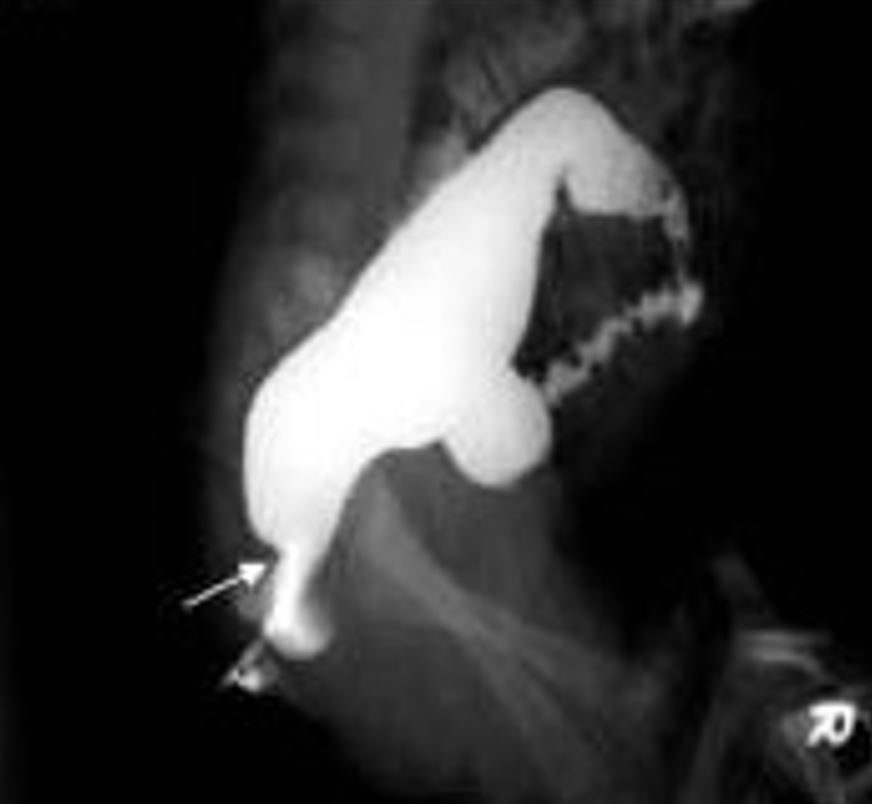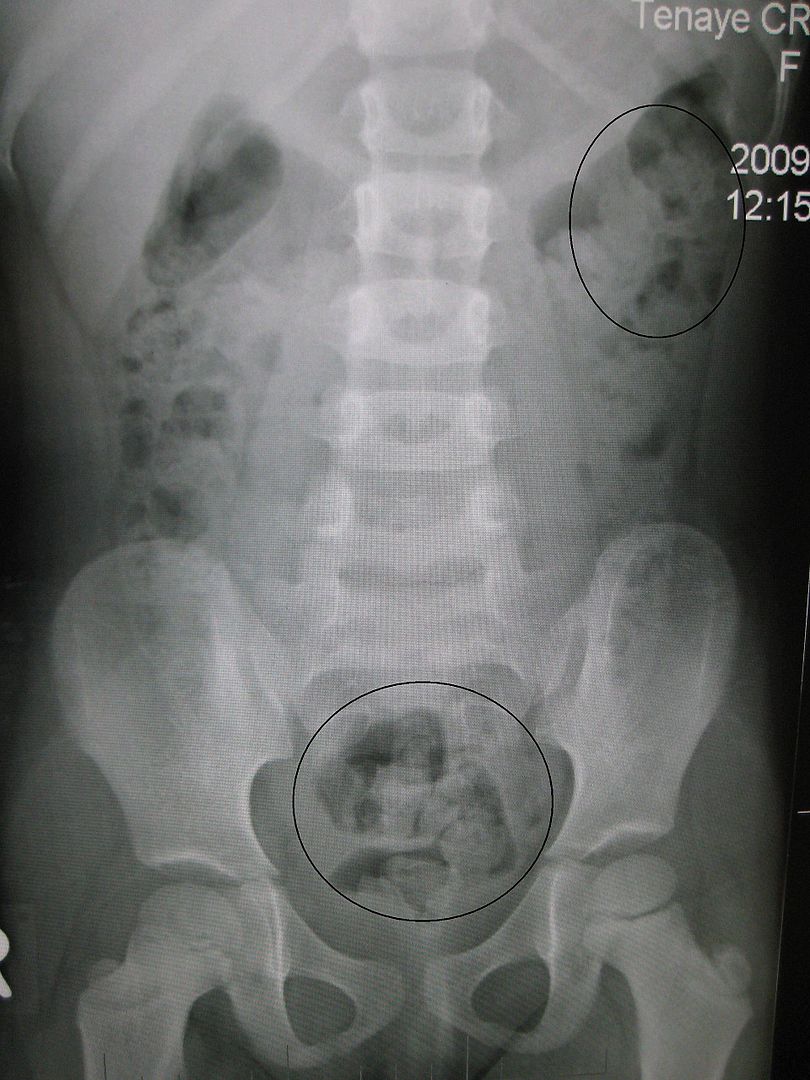Playlist
Show Playlist
Hide Playlist
Constipation in Children: Pathology & Clinical Presentation
-
Slides Constipation Pediatrics.pdf
-
Download Lecture Overview
00:02 In this lecture, we’ll be talking about constipation and Hirschsprung’s disease. 00:07 So, what is constipation? It seems inherently obvious but it does vary in diagnosis based on age. 00:15 Little children stool more frequently than older children. 00:19 So, constipation is a delay or a difficulty in defecation. 00:24 Normal infants will pass meconium within a delay more than 24-48 hours of birth. 00:30 A delay there may herald an inherent problem with defecation. 00:34 Among breastfed infants after that first initial period, typically, infants will be stooling between two and four times a day up until around the age of three months of age. 00:46 Formula fed infants stool much less frequently and may even go once every two or three days. 00:52 By the time children are three to four years of age, they are generally stooling about once a day, which is typical for adults too although there is of course some variation. 01:03 There are some risk factors for constipation that we should be aware of. 01:06 First, dietary changes. 01:08 Certainly, people who have a low fiber diet are at increased risk for constipation. 01:14 Behavior changes: As children grow older, sometimes stooling becomes a problem for them. 01:20 They have anticipatory fear of a painful stool or they decide they’re too busy with other activities and they don’t want to have to go to the bathroom. 01:28 This delaying as a behavior can result in constipation. 01:33 Also, sometimes children have organic changes in their body that result in constipation. 01:39 So if you see a patient where you suspect constipation, again, taking a good history is key. 01:44 Understand the birth history related to meconium. 01:47 A delay in that meconium may herald a problem such as Hirschsprung’s disease, which we’ll talk about a little bit later on. 01:55 Understand the frequency, the consistency and the size of the stools. 01:59 Large bulky stool is consistent with constipation, decreased frequency. 02:03 And also, hard ball or very hard stools that are painful to pass are classic, and so pain with bowel movements is also a heralding sign of constipation. 02:13 Patients may have fever, weight loss, and vomiting, but those are unusual for constipation and may mean that something else is going on. 02:22 Dietary habits are key. 02:24 It’s important to understand whether children are having a low fiber or a high fiber diet. 02:30 Understanding medications is also important. 02:33 There are some medications that can delay the rate at which we stool. 02:39 Delve into the toileting behavior behind children. 02:41 Sometimes parents, while teaching their children to use the toilet, engage in behavior that is not supportive. 02:49 This can make children fearful of the toileting experience, which can result in constipation. 02:55 And also, children with frequent urinary tract infections often have constipation as the cause. 03:01 Remember, a large ball of hard stool in the rectal vault can impinge the outlet of that bladder. 03:08 And so children who can’t empty their bladder all the way are actually at increased risk for urinary tract infections frequently. 03:15 In one study, a large percentage of children with vesicoureteral reflux which puts kids at risk for urinary tract infection actually also had constipation. 03:25 Constipation is a big problem in children with UTI. 03:30 So on exam, we’ll look at these children and we’ll try and figure out what’s going on. 03:35 The abdominal exam is important because you can often actually palpate stool in the left lower quadrant or throughout the abdomen in severe cases. 03:43 Palpating stool, these masses are soft and you can almost form them with your hand as you’re pushing in. 03:49 They are not hard masses but you definitely will feel a very full abdomen. 03:55 An anal and rectal exam can be helpful. 03:58 We don’t usually do this in little children when there’s a clear diagnosis of constipation, but if we’re unclear, an exam is important. 04:07 You can position them appropriately and inspect for anal wink, look for distention or impaction, and certainly, look for things like fissures or hemorrhoids which are associated with it, or frank occult blood. 04:21 If you inspect the rectal area and then look superior just above the buttocks, you can find often hair tufts, dimples, or other problems that may be a sign of a problem with the enervation of the lower intestinal tract. 04:37 Patients with spina bifida, for example, may also have constipation. 04:42 Also, understand the CNS disease and do a full exam of the CNS system, checking for things like cremasteric reflexes, which will be decreased in patients with lower enervation problems, as well as lower extremity tone, strength, and reflexes. 04:58 Those are all signs the child may have a neurologic problem, which is contributing to the constipation. 05:06 So, looking at the pathophysiology of constipation, basically, when we stool, there is both voluntary and involuntary muscle contractions that are involved in both controlling continence and active stooling. 05:23 Painful bowel movements may result in a child who withholds stool. 05:28 You can imagine a cycle where a child happens to be constipated because they had a low fiber meal for several days in a row. 05:35 And then they had an experience when they stooled, and it was painful because that hard ball of stool stretched the rectum and the descending colon in an uncomfortable way. 05:45 As they then continue to refuse to stool because of anticipation of pain, the rectal sensation gradually decreases, and there is gradual dilatation of that rectal vault. 05:57 Additionally, you now need more stool to cause the urge to defecate. 06:02 This cyclical problem results in worse and worse constipation. 06:09 With chronic retention, the internal sphincter dilates and even when the external sphincter relaxes. 06:17 This causes liquid stool leakage around the hard ball, which we might call encopresis. 06:23 Children with this might get skid marks or brown streaks in their underwear, which are not fully formed stools but rather leakage around the stool.
About the Lecture
The lecture Constipation in Children: Pathology & Clinical Presentation by Brian Alverson, MD is from the course Pediatric Gastroenterology.
Included Quiz Questions
Which of the following common childhood infections is a common complication of chronic constipation?
- Pyelonephritis
- Gastroenteritis
- Pneumonia
- Meningitis
- Cellulitis
A female infant is brought to the clinic with the complaint of constipation. Which of the following fact in the patient's history will help you diagnose Hirsprung disease as the cause of her constipation?
- Birth history related to meconium
- Frequency, consistency, and size of stools
- Fever with vomiting and weight loss
- Pain during defecation
- Dietary habit
Liquid stool leakage or encopresis occurs due to which of the following?
- Dilatation of internal sphincter due to chronic retention of stool
- Infection of the rectum
- Associated urinary tract infection
- Superimposed diarrhea
- Excessive drinking of water
When does a normal infant pass meconium?
- Within the first 48 hours
- In the first 72 hours
- After the first 48 hours
- After the first 72 hours
- Before birth
Customer reviews
4,0 of 5 stars
| 5 Stars |
|
0 |
| 4 Stars |
|
1 |
| 3 Stars |
|
0 |
| 2 Stars |
|
0 |
| 1 Star |
|
0 |
Good lecture, all important topics are talked about and explained.





